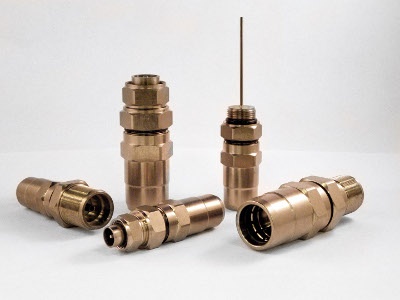 Hardline coax connectors are some of the most important pieces to delivering service to a subscriber’s home network, so making sure the connectors and cables are prepped and installed properly is vital to network performance.
Hardline coax connectors are some of the most important pieces to delivering service to a subscriber’s home network, so making sure the connectors and cables are prepped and installed properly is vital to network performance.
Hardline cable is used from the headend through the trunk and feeder lines, to the subscriber’s home, and there are many connectors used at the fiber node, amplifiers, line extenders and multitaps.
If even one connector is not installed properly, it’s a source of potential failure and can severely impact performance of the entire network.
Deploying a crew during early-morning maintenance windows is expensive and disruptive. Do yourself and your crews a favor and ensure proper installation the first time to eliminate having to go back and fix problems. No matter the type of connector you’re using, we’re going back to basics with a list of top 5 best practices for prepping and installing hardline cable and connectors.
1. Proper tools & condition of tools
Ensure you have the proper tools for the installation job you’re doing. Hardline connectors are not all the same, and neither are the tools needed for the job. For example, QR requires a slightly different prep technique than P3 cables. Not only is it important to use the proper tools, but they also need to be in good working order. A dull or damaged coring bit or broken sheath cutting blade could result in score marks on the center conductor or outer sheath. These can lead to signal transmission issues or weak spots in the cable causing radial cracks in the sheath. A coring tool should be replaced when you start to notice these issues.
2. Preparing cable for connector installation
When preparing the cable, make sure the cable is cut cleanly and squarely and not distorted in any way. If there is any flooding compound left on the outer sheath, remove it completely with a cleaner approved by your organization’s specifications. Be sure the center conductor is also clean with no dielectric residue left. You can use a cable center conductor cleaner with a serrated or square edge to do this properly. If any residue remains, use your fingernail to remove it. Do not use any other type of object, like a knife, to clean the residue because you could score the center conductor, leading to signal transmission issues.
3. Cable center conductor length
When trimming the center conductor of the cable to the proper length, use the cut marks provided on the body of the connector to determine where to make the cut. If the center conductor is cut too short or too long, you run the risk of a bad installation. Using linesman pliers or diagonal cutters, make a cut halfway through the center conductor, then rotate the cutters 90 degrees, and complete the cut to make a chisel point.
4. Connector pin length
The easiest thing to do to ensure proper network performance is making sure the stinger pin is cut correctly. This will make sure that the proper connection is made inside the equipment. Measure and mark the pin of the connector, following the equipment manufacturer’s instructions, and using the cut mark on the equipment as a guide for the proper pin length.
5. Tighten connector fully when installing on the cable
One of the most common mistakes when installing a hardline connector is not tightening it fully during the process of installing the connector onto the cable. Hand tight will never be tight enough for a hardline connector, so make sure you use the proper tools and tighten the connector bodies per the manufacturer’s installation instructions (ex. reach positive stop). A connector that is not tightened all the way, or tightened too far, is asking for issues to appear in the near future, creating a need to go back and correct the problem.
Every broadband service provider wants to reduce the number of trouble calls and increase productivity, so remembering the basics in hardline installation is necessary. It starts with prepping the hardline cable and connectors with the correct tools and skills, then installing them properly to avoid moisture, and ingress and egress. With these tips for best practice, any technician can help improve the network’s performance and save their company money.


